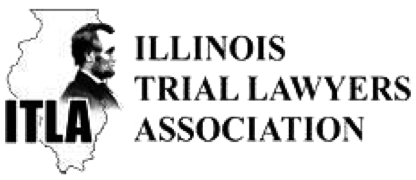Expecting parents prepare a great deal for the birth of a new baby.
From meeting with doctors to setting up the nursery, preparation gives parents some sense of control as they wait for the big day.
But, when complications arise during childbirth, there’s nothing parents can do but cede control and trust medical professionals to do their jobs. Unfortunately, that doesn’t always happen, and negligent care during delivery can cause or increase the risk of a birth injury.
If you think a healthcare professional made a mistake during your child’s birth resulting in a Hypoxic-Ischemic Encephalopathy (HIE) diagnosis, you have the right to seek compensation from those responsible. To learn how and when to file a medical malpractice claim, continue reading below.
What is a Hypoxic-Ischemic Brain Injury?
HIE, sometimes referred to as intrapartum hypoxia-ischemia or perinatal asphyxia, is a birth injury caused by an insufficient flow of oxygen-rich blood to the brain.
When this happens, a baby’s blood oxygen levels begin to fall below a point where the body can adequately support the normal metabolism of brain cells. The lack of adequate blood supply changes the brain cells’ metabolism to an unsustainable oxygen state.
If an adequate supply of oxygen resumes quickly, the brain cells will revert back to normal. However, the longer oxygen deprivation occurs, the greater chances of permanent injury, such as a hypoxic-ischemic brain injury.
What Causes Hypoxic-Ischemic Encephalopathy in Newborns?
There are a variety of factors that can contribute to HIE, including:
- Abnormal fetal position (i.e. breech position).
- Placental abruption.
- Amniotomy or rupture of membranes, resulting on umbilical cord compression or prolapse
- Hyper-stimulation as a result of too many uterine contractions. This is often due to the drug Pitocin.
- Delayed cesarean section delivery.
- Difficult or long labor.
- Use of forceps or a vacuum extractor during delivery
- Umbilical cord compression.
- Uterine rupture.
Depending on the severity of brain damage, the following symptoms may arise, ranging from short- to long-term disabilities:
- Seizures.
- Need for resuscitation after delivery.
- Low APGAR Scores (normal is 9 or 10).
- Lethargy.
- Low muscle tone.
- Slowed or no reflexes.
- Inability to walk or difficulty walking.
- Inability to use all four extremities without restrictions.
- Irregular breathing.
- Irregular heart rate and blood pressure.
- Need for MRI testing of the brain.
- No reaction to stimuli.
- No reflexes.
- Coma.
HIE often leads to a diagnosis of cerebral palsy. Children with cerebral palsy may have issues with walking, difficulty using hands and arms, and severe cognitive deficits or learning disabilities. As children with birth-related brain injuries and cerebral palsy become older, they often have difficulty with activities of daily living—such as eating, bathing, and dressing. The impact of these injuries is often permanent and requires a lifetime of care.
How Do You Determine if Your Child’s HIE diagnosis Was Due to Medical Malpractice?
Negligent care before, during, or immediately after birth significantly increases the chances that a newborn will develop HIE. This includes:
- Errors in fetal heart rate monitoring.
- Failure to promptly respond to indications of oxygen deprivation in the newborn.
- Failure to perform a timely cesarean section delivery of the baby.
- Failure to use hypothermia therapy on a newborn with HIE, minimizing lasting brain damage.
- Insufficient precautions taken for high-risk pregnancy.
- Mismanagement of fetal presentation.
- Failure of obstetricians and labor nurses to diagnose and treat the laboring mother’s uterine, placental or umbilical cord issues.
When negligence causes HIE, it is medical malpractice.
What Can You Do If Your Child’s Hie Diagnosis Was Due To Medical Malpractice?
A newborn who suffers from HIE could face a lifetime of care and medical treatments for cerebral palsy and other long-term disabilities, which can add up to tens of millions of dollars in health care costs.
If there were signs that your newborn suffered a lack of oxygen and was injured as a result, you may be eligible to file a claim on behalf of your child. Pursuing a claim will enable you to obtain compensation for your child’s injuries.
An experienced attorney will review your case and determine if there’s reason to believe that medical malpractice occurred and was a cause of your child’s injuries.
Let Us Help You Pursue Your Hie Birth Injury Lawsuit.
If you think a medical professional made a mistake during your child’s birth causing HIE or brain injury, the first thing you should do is contact the experienced Chicago-based birth injury lawyers at Hurley McKenna & Mertz. Our attorneys work closely with healthcare professionals and physicians to help you get answers, determine your rights, and seek the compensation you deserve.
Contact us today for a free consultation.






